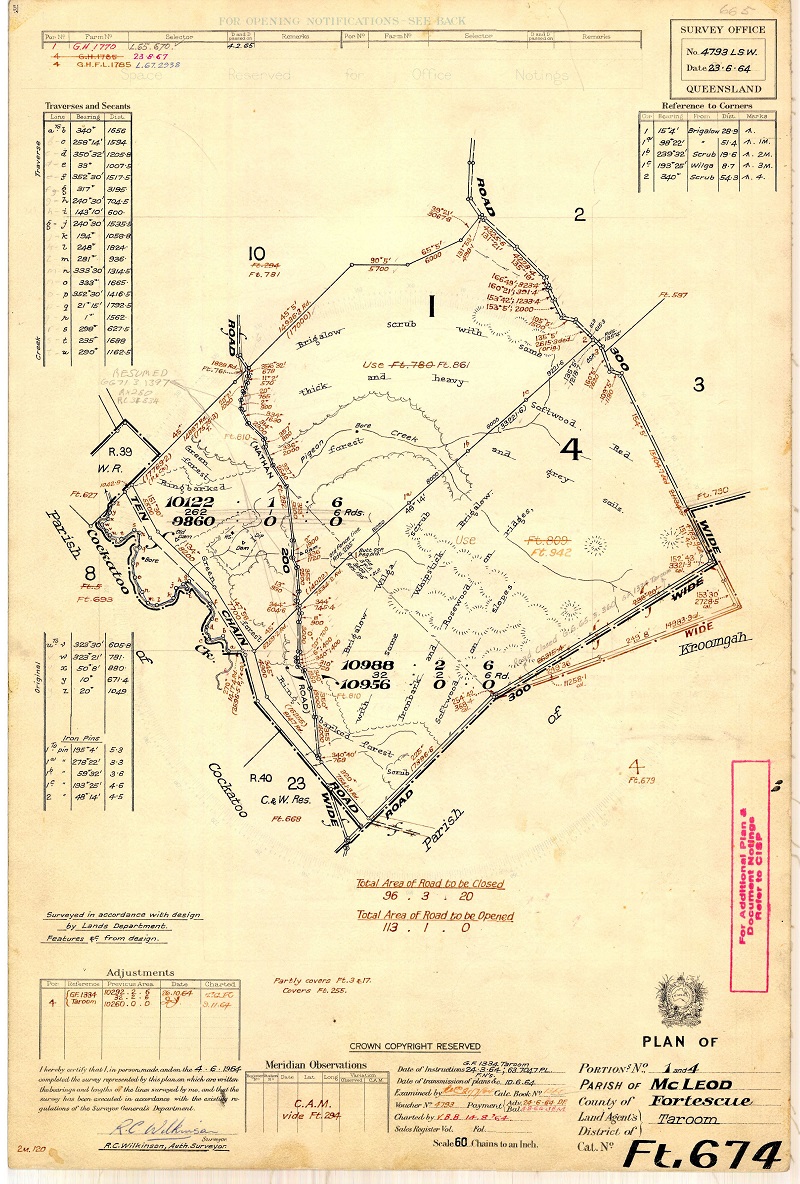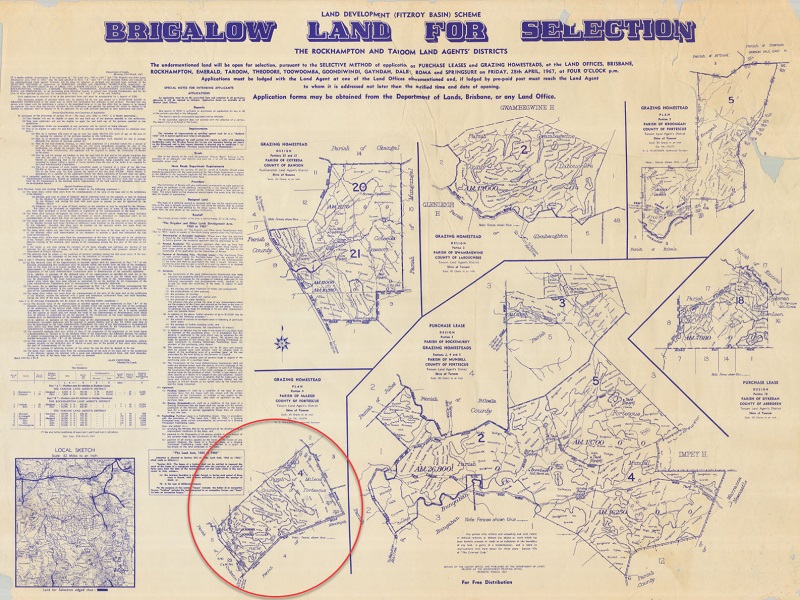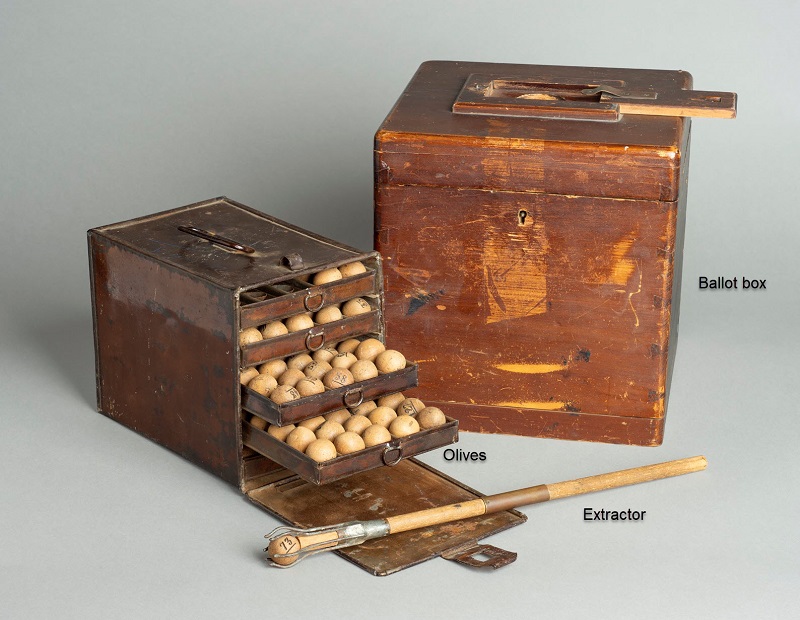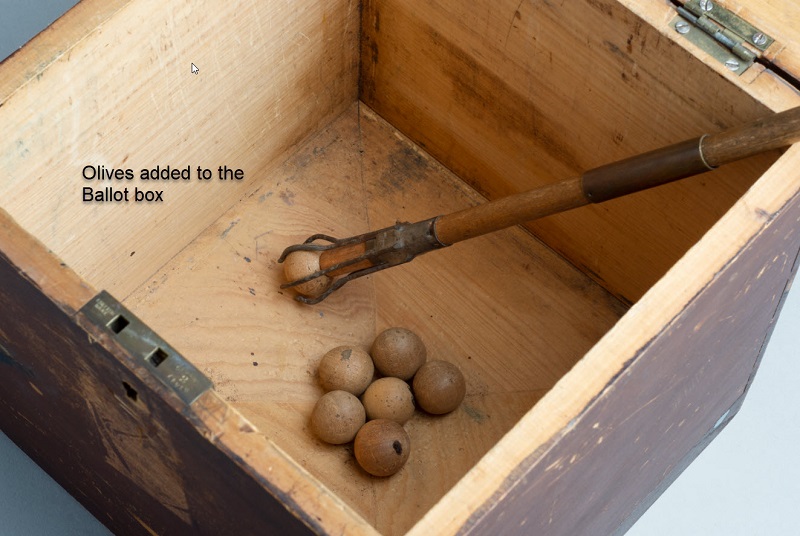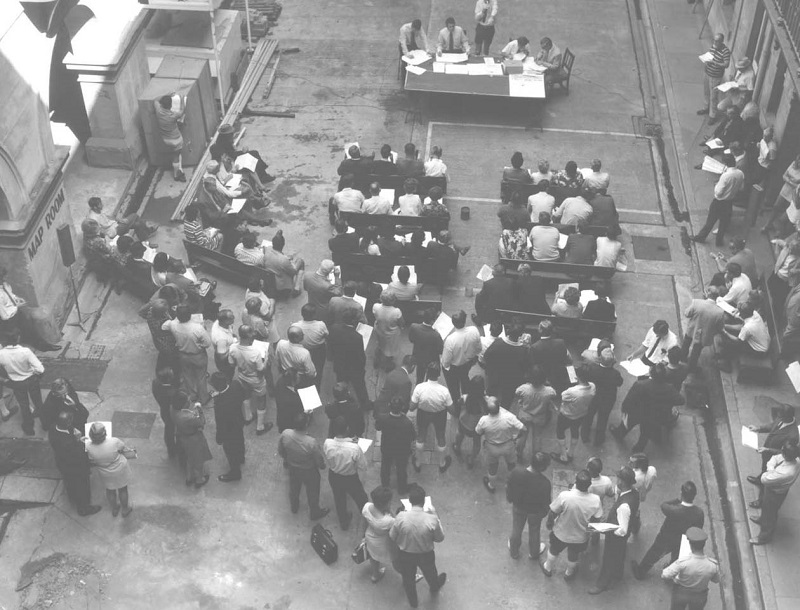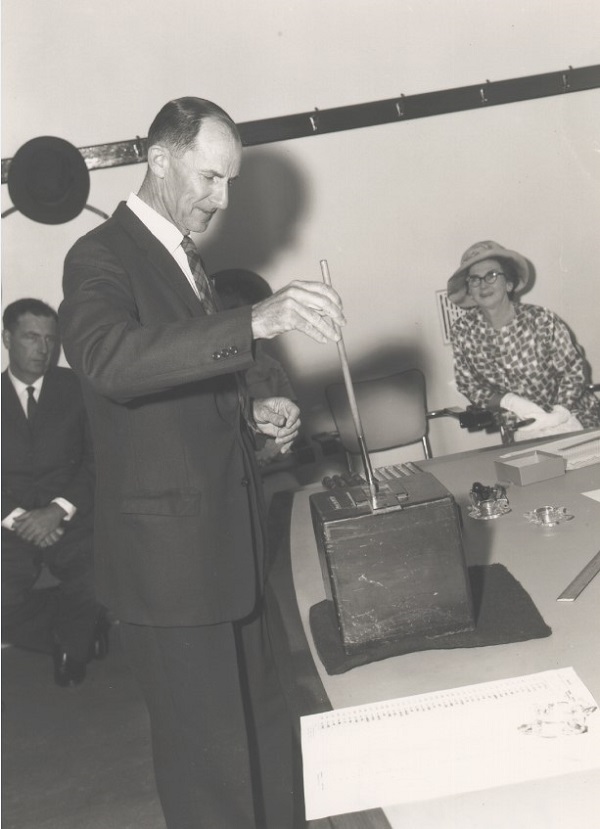Land ballots
In its early years, the Queensland Government released land to build communities in the fledgling state, wishing to encourage more intensive use of agricultural land to increase food production. When demand for land outstripped supply, the government used a lottery to allocate land fairly. On 13 October 1916, the ballot box system was introduced.
How the system worked
Surveying the land
Land that was to be released was surveyed and survey plans drawn to capture the details. For example, survey plan FT674 captured the survey of Portions 1 and 4 in the Parish of McLeod. The date of survey was 4 June 1964.
Click to view larger image.
Creating the land sales map
A land sales map was created using the relevant survey plans and cadastral maps that covered the area. It advertised the ballot and provided details about the blocks of land being released. Land could be open for selection as either freehold or leasehold tenure.
This land sales map for the Land Development (Fitzroy Basin) Scheme advertised Brigalow land for selection. Portion 4 on survey plan FT674 is included in this land sale. In this case the blocks were opened for selection as Purchase leases and Grazing Homestead leases.
Click to view larger image.
Drawing the ballot
At the land selection ballot events, numbered marbles (called ‘olives’) were placed in a locked ballot box in equal number to the applications for land received. The Land Commissioner then chose a non-applicant to draw marbles from the box using the extractor. For each block, the non-applicant would draw a marble and whoever held the corresponding number would be allocated that block. The land ballot for the 10 blocks shown on the Brigalow map above was held on Friday 28 April 1967.
Click to view larger images.
Success of the ballot box system
This system was described in the Annual Report of the Department of Public Land for the year of 1916 as reducing ‘to a minimum the possibility of dishonest practice, besides being much more expeditious than the old one... and is giving complete satisfaction’.
It was first used in the drawing for soldiers’ selections at Beerburrum in 1916. Queensland State Archives has released details on the Beerburrum Soldier Settlement as part of their Stories from the Archives series.
It kept giving ‘complete satisfaction’ well into the late 1960s.
More information
Examples of the ballot box items are on display at the Museum of Lands, Mapping and Surveying.
Additional government land sales maps for the Brigalow scheme can be accessed via the Open Data portal.



